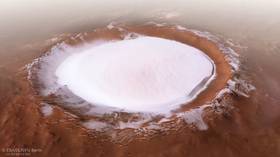Geminids meteor shower to light up the December skies in spectacular farewell to 2019

The Geminids meteor shower takes place every year as the Earth passes through the debris field of ‘extinct comet’ 3200 Phaethon and is often the highlight of every stargazer’s year, thanks to its bright, multi-colored fireballs.
Asteroid 3200 Phaethon was first discovered in 1983 and is the third-largest potentially hazardous near-Earth asteroid (NEO) we know of, with a diameter of 5km, or roughly half the size of the space rock which helped drive the dinosaurs to extinction 65 million years ago.
The Geminids will begin on the evening of December 4 and peak between December 14 and 15, with an expected peak rate of 88 meteors per hour, before it finally wraps up on December 17.
Also on rt.com Aliens, is that you? Mysterious ‘fireball’ streaks across the sky in Oregon, leaves cops scratching their heads (PHOTOS)The multi-colored streaks occur thanks to traces of metals like sodium and calcium within the space rock fragments which burn up upon entry into our atmosphere at speeds of roughly 70 kilometers per second. The streaks are mainly white or yellow, and the odd smattering of green, red, and blue thrown in for good measure.
Experts are predicting a bright Moon, unfortunately, which may obscure the shooting stars, regardless of where on Earth you’re viewing them from.
“You can look out for the shower from sunset as the radiant – the area of sky the meteors appear to originate from – is in the northern hemisphere,”says the Royal Observatory.
Also on rt.com Rare ‘unicorn’ meteor shower set to be sparked by mysterious cometFor the best views, experts recommend a comfortable chair and plenty of blankets, adding that there’s no need for binoculars or a telescope as the meteors are visible with the naked eye and it would be almost impossible to predict where in the sky the bright streaks might appear.
A safe location in a wide open space away from street lights and other sources of light pollution guarantees the best possible chance of catching some of the solar system’s best light show.
The Geminids are thought to be intensifying each year, so if you braved the elements last year, expect an even bigger cosmic extravaganza this time around.
Think your friends would be interested? Share this story!














